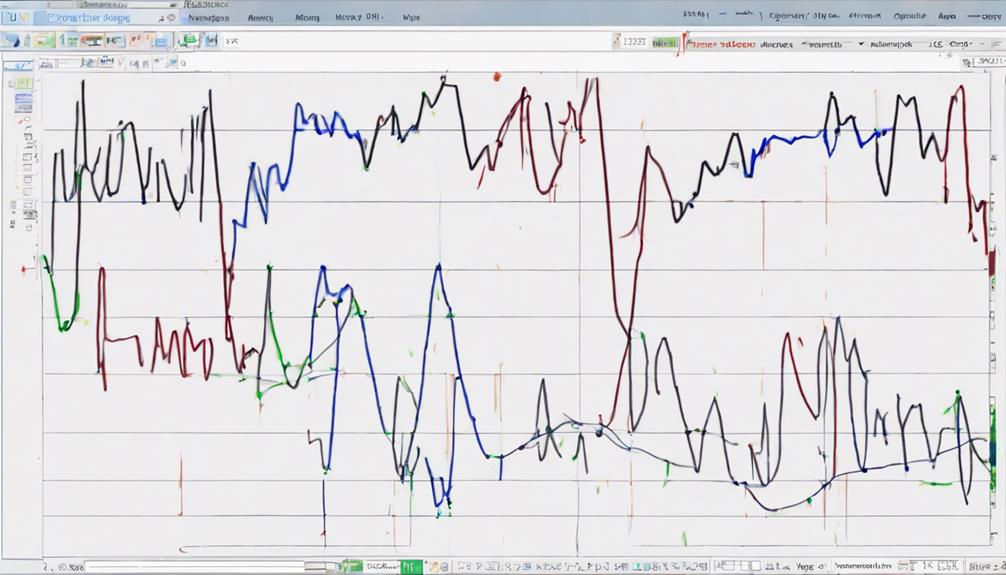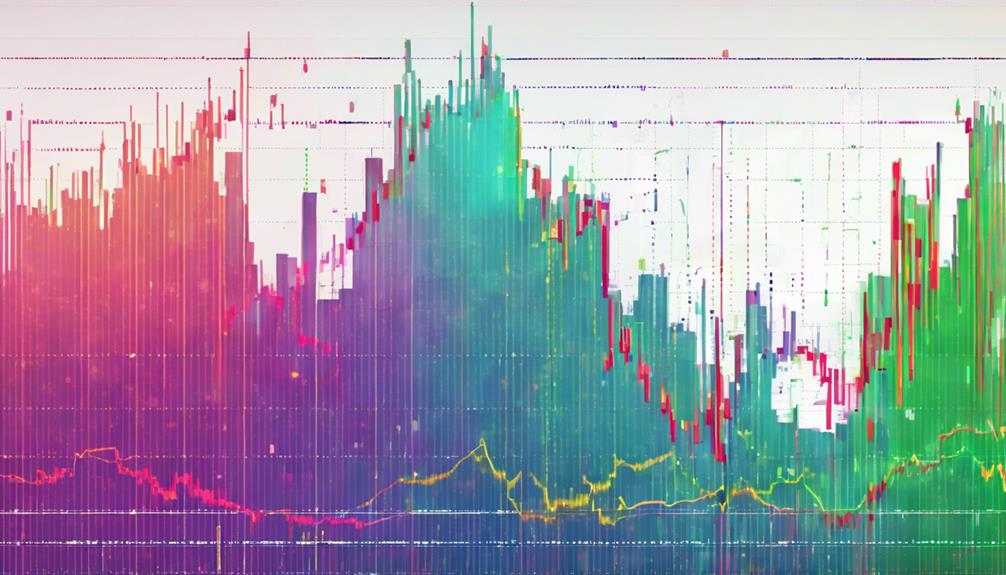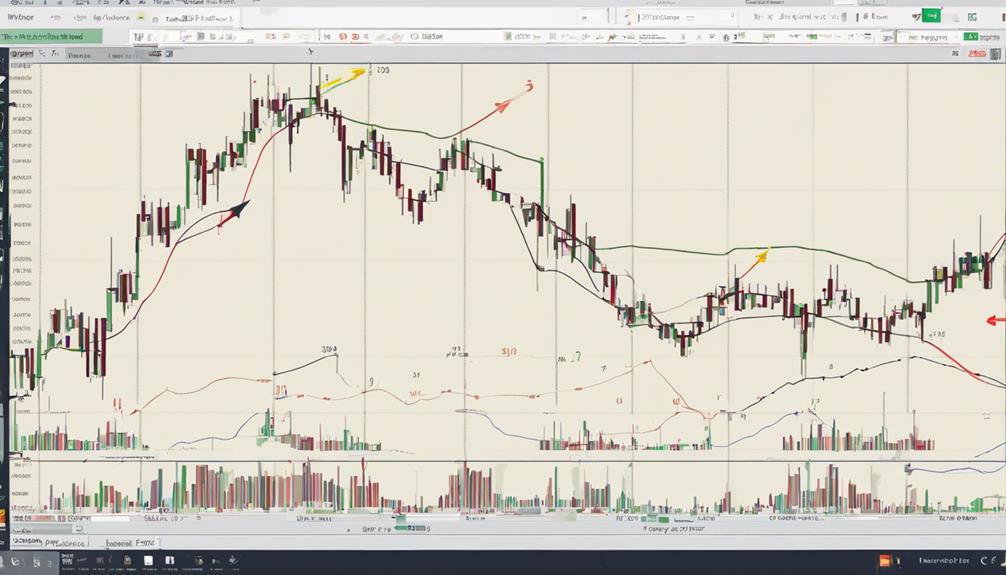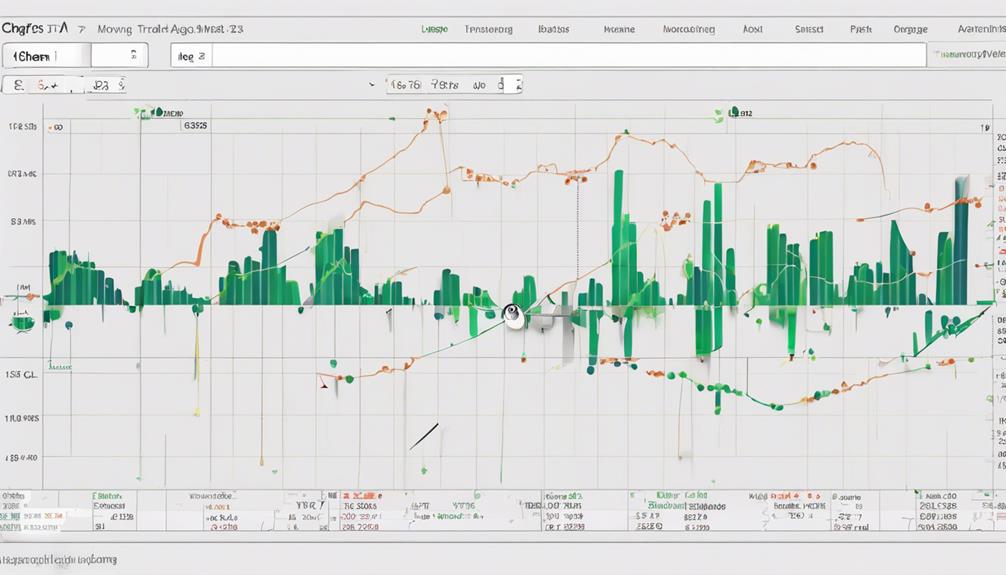Did you know that moving averages can serve as key indicators in algorithmic trading strategies?
These versatile tools go beyond just smoothing out price data; they can provide valuable insights into market trends and potential entry/exit points.
Whether you are a seasoned trader or just starting in algorithmic trading, understanding the role of moving averages can significantly enhance your decision-making process.
So, how exactly do moving averages impact trading algorithms and what benefits do they offer traders in the dynamic world of financial markets?
Importance of Moving Averages
Moving averages play a pivotal role in algorithmic trading by serving as crucial trend indicators that effectively smooth out price data. These indicators help traders analyze stock data, identify market trends, and generate trade signals based on historical price movements.
By utilizing moving averages in technical analysis, traders can better understand market trends and predict potential price changes. The accuracy of trade signals improves as moving averages filter out insignificant price fluctuations, allowing traders to focus on essential market movements.
Algorithmic trading strategies heavily rely on the insights provided by moving averages to make informed decisions and capitalize on market opportunities. Understanding the importance of moving averages is fundamental for successful trading strategies centered around trend analysis.
Types of Moving Averages

When considering types of moving averages commonly utilized in algorithmic trading, it's essential to differentiate between the Simple Moving Average (SMA) and the Exponential Moving Average (EMA).
The SMA calculates the average price over a specific period, offering a more straightforward approach. In contrast, the EMA gives greater weight to recent price data, making it more responsive to market changes.
Traders often choose between SMA and EMA based on market conditions and their trading strategy. EMA is favored in fast-moving markets for its quick reactions, while SMA is preferred for smoother trend identification in stable conditions.
Understanding the differences between these two technical indicators is crucial for effective data analysis and optimizing trading strategies in algorithmic trading.
Moving Averages in Trend Identification

To effectively identify trends using moving averages in algorithmic trading, understanding how these indicators smooth out price fluctuations over specific time frames is essential.
- Moving averages provide a clear visualization of the average price movement, aiding in determining the market trend direction.
- Different lengths of moving averages, like 50-day or 200-day, help assess short-term or long-term trends.
- Algorithmic trading algorithms often use moving averages to generate buy or sell signals based on crossovers or trend patterns.
- Accurate interpretation of moving averages is crucial for making informed trading decisions and optimizing trade execution in algorithmic trading strategies.
Using Moving Averages for Entry/Exit Signals

Utilizing moving averages for entry and exit signals in algorithmic trading enhances signal accuracy and aids in automating trade decisions efficiently. Traders often rely on moving average crossovers, such as the Golden Cross and Death Cross, to determine optimal entry and exit points based on price trends.
These signals help automate decision-making processes, allowing for timely actions in buying or selling assets. By incorporating moving averages into the trading strategy, algorithmic traders aim to capture trends effectively and optimize trade execution.
This methodical approach to utilizing moving averages ensures a data-driven and systematic way to enhance trading performance and capitalize on market opportunities.
How Do Moving Averages Impact Algorithmic Trading Strategies?
Moving averages are essential trading strategies with moving averages used in algorithmic trading. They help smooth out price fluctuations and identify trends, making them valuable for traders. By using moving averages, algorithmic trading strategies can make better-informed decisions on when to buy or sell assets for maximum profit.
Incorporating Moving Averages in Strategy Development

Incorporating moving averages into strategy development enhances trend identification and signal precision in algorithmic trading. When integrating moving averages into your algorithms, consider the following:
- Experiment with different types of moving averages like the Simple Moving Average (SMA) or Exponential Moving Average (EMA) to analyze trends effectively.
- Adjust the moving average length, such as 50-day or 200-day, to tailor the responsiveness and reliability of your trading strategies.
- Utilize moving averages to filter market noise, minimize false signals, and make well-informed trading decisions based on trend direction.
- Implement moving average crossovers, where short-term averages intersect longer-term averages, to generate buy or sell signals efficiently.
How Do Moving Averages Impact Algorithmic Trading?
Moving averages are essential in trading algorithms, as they help smooth out price data and identify trends. The use of essential moving averages in trading algorithms can impact decision-making processes by providing valuable insights into potential stock movements. Traders rely on these averages to make informed and strategic trading decisions.
Frequently Asked Questions
Why Is Moving Average Important in Trading?
In trading, moving averages are crucial for smoothing out price trends and identifying market direction, aiding decision-making. They provide historical data visuals, helping you analyze trends and make informed choices for optimal trading outcomes.
What Is an Advantage of Moving Averages?
An advantage of moving averages is their ability to smooth out price trends by filtering noise, aiding in trend identification. Incorporating them into trading algorithms helps reduce short-term fluctuations, focusing on longer-term trends for better decisions.
What Does Moving Average Tell You?
Moving averages tell you the smoothed trend direction by calculating the average price over a specific period. They help identify potential reversals and act as dynamic support/resistance levels, guiding your trading decisions with historical data.
What Is the Best Use of Moving Averages?
Looking to maximize moving averages in trading? Identify trends, set entry/exit points, filter out noise, and optimize time frames. Analyze crossovers for signals. Enhance decision-making and performance by incorporating moving averages into your strategy.
Conclusion
In conclusion, moving averages are essential tools in algorithmic trading, helping traders analyze trends and make informed decisions.
By incorporating different types of moving averages into their strategies, traders can effectively identify entry and exit points in the market.
The use of moving averages is like a guiding light in a sea of stock price fluctuations, providing clarity and direction to navigate the complexities of trading.
